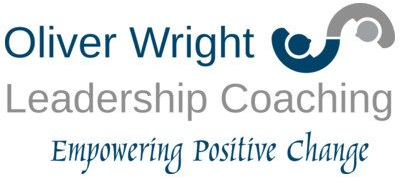Using Coaching and Mentoring as a Leader
Coaching and mentoring as a leadership and development style works because it treats the employee as an adult, it acknowledges their capacity for growth, and it works on building self-belief and self-reliance.

John Whitmore noted that:
“Adult learning theory tells us that adults learn in a completely different way to children. Self-belief is central to this. Coaching is adult learning in practice and is both what leaders need and the direction in which leadership style needs to travel. In essence coaching is about partnership, collaboration, and believing in potential.” (Whitmore 2017)
Where coaching leadership differs from directive leadership is in using instruction only where necessary for urgent tasks for example, for a technical skill or process briefing, and it avoids the use of telling all together.
Telling and demanding without debate or listening to the other person is disrespectful, it cuts out alternatives and choice, it disempowers, demotivates, and fosters a blame dynamic.
I define a coaching leader as:
A leader who employs coaching and mentoring techniques as part of their leadership approach with the intention to develop in others greater self-awareness, knowledge, skills, and behaviours, so that individuals and the team are motivated and able to increase performance.
Through a respectful dialogue driven approach where listening to understand and asking questions to raise awareness are a fundamental part of the dynamic, both participants will learn. The quality and creativity of solutions found, and decisions made will improve.
Coachees are more likely to be motivated to take ownership of the decision and be responsible for ensuring it gets actioned, with sufficient resources and support.
Coaching and Mentoring Leadership Skills
I want to now look at the fundamentals of coaching and mentoring that will help you put this style of leadership into practice in your workplace.
Relationships
The starting point to building engaged and motivated team is to take an interest in them as people, get to know them. This will provide you with the foundation of trust that everything else is built upon.
I am not saying you need to be best buddies with everyone, but in the context of a professional working relationship you need to take an interest in them as people and as individuals.
You can’t get the best out of people if you don’t know what makes them tick, and you can’t judge their motivators if you don’t know what is important to them.
It is important to understand what capacity your team member has for taking on new stretch tasks or dealing with change.
Capacity refers to an individual’s ability to absorb change or take on new tasks effectively. People can only take on a certain amount of new knowledge, tasks or change before they become overloaded, the consequences of which may include, underperformance, burnout, depression, or anxiety.
Capacity then, is a finite resource. It is not divided between work and personal lives. Your team members’ capacity might be being taken up with personal things as well as their work life, and whilst we can’t pry into people’s personal lives, we need to be cognisant of the fact and attuned to what’s going on.
It takes time but with respect, trust, and a genuine interest in people you will build a more solid foundation for a mutually beneficial relationship.
Listening, Reflecting and Questioning
These are the three fundamental activities of a coaching and mentoring style of leadership.
1. Active listening with the intent to understand what is being said
2. Reflecting back what people have said to check understanding
3. Asking open questions to generate insight and self-awareness
Practicing and becoming competent at all of these will elevate your interactions with your team and you will find that over time you get much more creative thought and idea generation, as well as building skills in your team members that will allow them to be more autonomous and make more decisions themselves.
Listening and Reflecting
When someone comes to you with a problem your first thought may be to give them the answer, maybe you are an expert, or you are in hurry, or you just feel it would be helpful.
This may be what is needed but try not to rush into giving advice or solutions, rather help people to think for themselves first.
Most of the time, most of us are not listening to understand if we are honest. Depending on the situation, the person speaking and what’s going on in our lives we are usually listening in one of three ways, which I am sure you will recognise.
- Surface listening is where we are not really listening at all, we give the impression we are, or at least attempt to look like we are listening, but we could probably not repeat back much of what we heard.
- Conversational listening, this is where we are thinking about our response as the other person is talking, before they have finished their point. Our focus is on ourselves, this makes us impatient to speak, which we may show through body language, signalling to the other person we are eager for them to finish.
- Critical listening mode,is listening but not with the intent to understand, but rather they are critically evaluating every word and deciding their critical response before the full information has been transmitted and before they have chance to fully process the information.
Active listening means listening with one’s full attention and not thinking about what you are going to say, questions should be spontaneous based purely on what you hear.
As Nancy Kline in her excellent bestseller Time to Think, succinctly defines it,
“Listening with respect and without interruption” (1999)
Kline also summarises beautifully the power of listening and being fully present with the phrase,
“The quality of your attention determines the quality of other people’s thinking” (1999).
In my practice as a coach, I have found that the biggest benefit to the coachee is the simple fact of being listened to properly, with respect, without judgement and without interruption so that they can clarify their thoughts and express themselves fully.
Best Practice for Active Listening and Reflection
Firstly, be present and pay attention. Give the person speaking your full attention and try to put everything else out of your mind.
The skill is mastering the ability to pay full attention and block out the distractions so that you can actually process fully what people are saying. It needs commitment and practice; it is rooted in the ability to be present in a given situation.
You should also observe body language, facial expressions, and tone of voice as you are listening, to gauge the true meaning behind what is being said. Sometimes the words don’t match the tone, facial expression, or body language which may be a signal that you should be probing through reflection and open questions.
As you are listening try not to be judgemental or to jump to conclusions, let them finish what they are saying, before you make conclusions. Being judgemental inevitably leads to defensiveness and to the other person closing up or perhaps going on the attack, so hold your judgement and try to listen as a neutral observer.
Mind the Gap!
Don’t rush to fill the gaps in a conversation if you think the speaker is still processing and thinking. It can be awkward, and it takes a bit of getting used to, but if you think there is more to come then try to wait a few seconds before jumping in.
Questioning
Asking open questions is another way of eliciting information, helping people to think, probing assumptions, and drawing insights.
Open questions are most useful at the start of a conversation because they get the speaker to think and do not close down alternatives and they avoid you just getting the answer you are looking for.
For example, “Do you like working here?” is a closed question, it will elicit a yes or no answer and does not give much room for an expansive response
Simply changing the question to “What do you think about working here?” or “How do you feel about working here?” is going to get you a different, more expansive answer.
When asking questions, you are trying to find out what the person really thinks and feels.
You need to avoid causing defensiveness which tends to get people to close up or go on the attack.
“Why” questions can make people defensive. Avoiding why questions is a really simple but effective change you can make that will have a positive impact on the quality of your interactions.
For example, if someone says, “I really think we should reconsider the marketing plan for the new product launch”.
Asking “Why?” is likely to lead them into a defence of their statement not a further explanation or greater depth.
Whereas you can reframe the question as an open question, such as: “What do think the main issues are?”, “What reasons do you have for wanting to reconsider”, or simply “Tell me more about that”
Example Questions
There is no one set of magic questions as it will depend on the specific situation, however you can think of types of questions being categorised into groups that help you achieve different goals in the conversation.
You can use these as a guide to help you have meaningful conversations and to help you coach someone into finding clarity, insight and the action needed to solve their issue.
Clarification
What do you mean by…?
Can you give me an example?
What do you think is the main issue?
Probe Assumptions
What else could we assume?
How did you arrive at these assumptions?
What happens if your assumption is wrong?
Reasoning and Evidence
Can you give me a specific example?
What evidence are you basing your answer on?
Alternatives and choices
Are there different ways of looking at this problem?
What other choices do you have?
Focus on Action
Coaching and mentoring are not passive activities, they are action focused with the aim of delivering improved performance and achievement of objectives.
Questions you can use to probe action and commitment are:
How confident are you in achieving the objective?
On a scale of 1 to 10 how committed are you to this objective?
What resources do you need?
When will you achieve the objective?
What steps do you need to take to achieve the objective
ABC
To paraphrase a famous sales mantra (Always Be Closing), you should Always Be Coaching. What I mean is that adopting a coaching attitude and approach should become second nature when you are interacting with your team, so that even in informal moments or brief conversations you are using the key techniques we’ve discussed here.
For example, one of your team comes to your desk and says,
“Hey boss, have you got a couple of minutes I need to get your advice on something?”
Your instinct may be to listen to what they have to say (hopefully actively listening) and then to say:
“Well, what I think you should do is…” or “Why don’t you do X”
If we get ourselves into a coaching mindset, we should respond in a different kind of way. For example:
- “Can you clarify what the main issue is for me?”
- “What do you think the next steps should be?”
- “What would be a good outcome here?”
- “What would you like to do?”
The point to remember is that we need to get into the habit of supporting our people to think through the possible solutions for themselves, to clarify what they mean, and to be clear on the outcome they are looking for.






